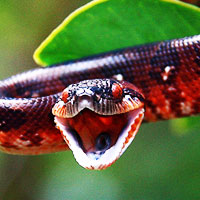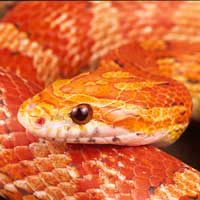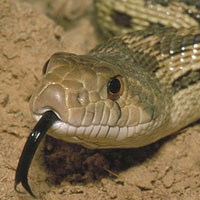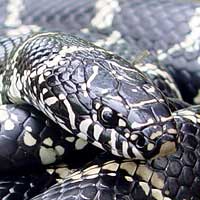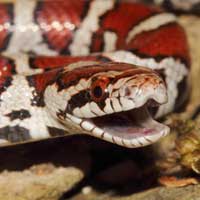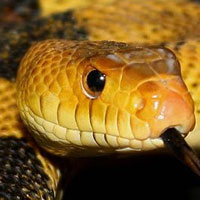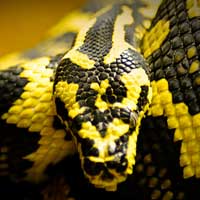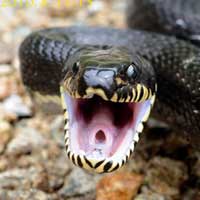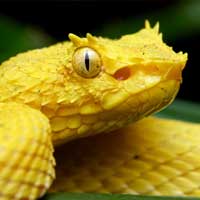Pacific Boa: The Mysterious Island Boa That’s Captivating Keepers Worldwide
The Pacific Boa is scientifically named Candoia carinata. It belongs to the Boidae family, which includes non-venomous constrictor snakes.
Scientific Name: Candoia carinata
Snake Family: Boidae
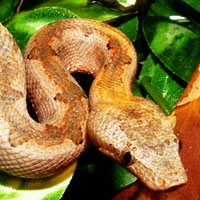
Introducing the Pacific Boa: A Small, Secretive Snake with Big Appeal
The Pacific Boa is a ground-dwelling species from the South Pacific that’s gaining attention for its unique biology and understated charm. Scientifically known as Candoia carinata, this member of the Boidae family is notable for its modest size, rough keeled scales, and cryptic behavior. Found across islands like New Guinea, the Solomon Islands, and Vanuatu, the Pacific Boa is a nocturnal ambush predator with specialized feeding habits. Unlike larger, more aggressive boa species, this one is calm, manageable, and ideal for experienced reptile keepers looking for something out of the ordinary. This article explores its habitat, feeding, behavior, reproduction, and care—providing everything you need to know about this rare and fascinating boa.
Other Common Names for the Pacific Boa
- Bevel-nosed Boa
- New Guinea Ground Boa
- Viper Boa (often confused with Candoia aspera)
- Pacific Ground Boa
- Dwarf Pacific Boa
Where the Pacific Boa Lives: Island Forest Floors and Tropical Hideouts
The Pacific Boa is endemic to several islands across the South Pacific, including parts of New Guinea, the Bismarck Archipelago, the Solomon Islands, and Vanuatu. These islands offer diverse ecosystems, but the Pacific Boa almost always chooses shaded, ground-level microhabitats. Commonly found in tropical forests, leaf litter, and under logs or rocks, this snake avoids open spaces and bright light.
Unlike many of its arboreal cousins, the Pacific Boa is terrestrial by nature. It prefers moist, cool, and densely vegetated forest floors, often near streams or seasonal water sources. Its cryptic coloring and rough-textured scales provide excellent camouflage among forest debris, helping it remain hidden during the day while awaiting nighttime activity.
| Environmental Factor | Preferred Conditions |
|---|---|
| Habitat Type | Tropical forest floor, under logs and leaf litter |
| Elevation | 0–600 meters above sea level |
| Temperature | 76–84°F (24–29°C) |
| Humidity | 70–85% |
| Activity Cycle | Nocturnal and crepuscular |
Feeding the Pacific Boa: Unique Diet Requirements for a Unique Snake
The Pacific Boa has a diet that differs from many other snakes in captivity. While most boas consume rodents and birds, this species has adapted to prey primarily on amphibians, lizards, and even large invertebrates in the wild. This dietary specialization can present challenges for keepers, particularly with wild-caught or young specimens that may refuse rodent prey.
Successful captive feeding strategies often include offering frog-scented pinky mice, small feeder lizards, or even amphibians such as soft-bodied frogs. Over time, some individuals can be transitioned to rodents, but others remain strict amphibian or reptile feeders.
- Hatchlings: Small frogs, frog-scented pinkies, or geckos every 5–7 days
- Juveniles: Reptile-scented mice or small amphibians every 7–10 days
- Adults: Small rodents, frogs, or lizards every 10–14 days
Feeding sessions should be done in low light to mimic dusk conditions, and prey may need to be presented on tongs in a lifelike manner to trigger a feeding response. Patience is essential when working with this species, as they are known for being finicky eaters.
Behavior and Temperament: What It’s Like to Keep a Pacific Boa
The Pacific Boa is a reserved and cryptic snake with a calm, almost sluggish demeanor. These snakes are nocturnal and spend the majority of the day buried under substrate or coiled in a hide. At night, they become more alert and may slowly explore their surroundings or wait in ambush for prey.
In terms of temperament, Pacific Boas are generally very tolerant of handling, although they may hiss or puff when disturbed. Biting is rare, and most individuals become more comfortable with gentle, consistent interaction over time. Their slow movements and reluctance to strike make them very manageable in a captive setting.
- Disposition: Calm, secretive, and tolerant
- Activity Level: Low; active mostly at night
- Defensive Behavior: Hissing, head hiding, occasional body flattening
- Response to Handling: Usually passive after acclimation
It’s important to remember that this species prefers minimal disturbance. A stable, secure environment with consistent humidity, plenty of hiding spots, and a low-stress routine will result in the best behavior and health outcomes.
Health and Longevity of the Pacific Boa: What to Watch For
Pacific Boas are long-lived snakes when cared for properly, often reaching 15 to 20 years in captivity. However, they are prone to stress-related health issues if their environmental needs are not met. Humidity and hydration are particularly important, as dehydration can lead to retained shed, kidney problems, and digestive issues.
Common health concerns include:
- Dehydration: Symptoms include wrinkled skin, dull eyes, and difficulty shedding
- Refusal to Feed: Often due to stress, improper prey, or poor habitat conditions
- Parasites: Especially in wild-caught specimens; regular vet exams recommended
- Respiratory Issues: Linked to low temperatures or poor ventilation
A routine health schedule should include hydration monitoring, regular misting, fecal exams, and weight checks. Spot clean the enclosure weekly and deep clean every 4–6 weeks. Provide a consistent photoperiod and avoid sudden environmental changes.
| Health Metric | Optimal Range |
|---|---|
| Lifespan | 15–20 years |
| Humidity | 70–85% |
| Ambient Temp | 76–82°F |
| Feeding Frequency | Every 7–14 days |
Reproductive Behavior of the Pacific Boa: From Mating to Neonates
Pacific Boas are ovoviviparous, meaning they give birth to live young. Breeding typically occurs at the end of the dry season when environmental conditions signal the start of the wet season. Males locate females by following pheromone trails, and courtship may last several days, involving tail-wrapping and subtle body alignment.
After successful copulation, the female undergoes a gestation period of approximately 120 to 150 days. During this time, she may reduce her food intake or stop eating entirely. Birth usually occurs at night or early morning, with litters ranging from 5 to 15 neonates.
- Breeding Season: Typically late dry season
- Gestation Period: 120–150 days
- Litter Size: 5–15 live offspring
- Neonate Size: 5–8 inches
Newborns are independent from birth and typically begin feeding after their first shed. Captive-bred Pacific Boas are still uncommon, so each successful litter represents a valuable step toward sustainable captive populations.
Handling and Daily Care for the Pacific Boa: A Guide for Success
Handling the Pacific Boa requires patience and gentle confidence. While these snakes are not known to be aggressive, they are naturally shy and may take time to adjust to human interaction. Early handling should be limited to short sessions to avoid overwhelming the animal.
- Enclosure Size: 20–30 gallon long enclosure minimum
- Substrate: Moisture-retaining substrate like coco fiber or cypress mulch
- Hides: At least two secure hide boxes (warm and cool side)
- Humidity Control: Daily misting or automated humidifier
- Lighting: No special lighting required; ambient is fine with day/night cycle
With consistent care, proper humidity, and a feeding routine tailored to their needs, Pacific Boas can become long-term, low-maintenance additions to a reptile collection. Their unique look, calm behavior, and fascinating ecological background make them ideal for advanced hobbyists who appreciate cryptic, ground-dwelling species.
Other Snakes In This Species
 Argentine Boa
Argentine Boa Calabar Burrowing Boa
Calabar Burrowing Boa Colombian Rainbow Boa
Colombian Rainbow Boa Common Boa
Common Boa Cooks Tree Boa
Cooks Tree Boa Cuban Boa
Cuban Boa Desert Rosy Boa
Desert Rosy Boa Desert Sand Boa
Desert Sand Boa Dumeril Boa
Dumeril Boa Egyptian Sand Boa
Egyptian Sand Boa Emerald Tree Boa
Emerald Tree Boa Haitian Boa
Haitian Boa Hog Island Boa
Hog Island Boa Madagascar Ground Boa
Madagascar Ground Boa Madagascar Tree Boa
Madagascar Tree Boa Pacific Boa
Pacific Boa Red Sand Boa
Red Sand Boa Rough-scaled Sand Boa
Rough-scaled Sand Boa Rubber Boa
Rubber Boa True Red Tail Boa
True Red Tail Boa Western Rainbow Boa
Western Rainbow Boa
